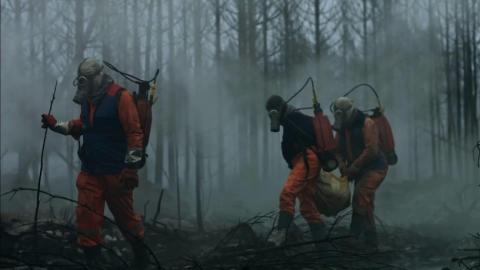
After 25 years as a news writer and local television reporter, and 10 years as a journalism educator, I am growing increasingly concerned that local television news stations are not carving out a more vital role in their communities.
In a time when newspapers are struggling to stay afloat, and information is coming from everywhere, local TV news stations have the unique power to help inform their neighbors; a power I believe they should better utilize.
Imagine how the local media landscape used to look: Three or four local channels and a couple of local newspapers.
As a former broadcast and print reporter (mainly broadcast), there was the feeling that the newspapers were the main place to go for hyper-local news. When I was a “stringer” for the Cincinnati Enquirer, I covered the eastern areas of town. The majority of stories that came out of there–about a road-widening project, a church’s food festival or an easement restriction–were not covered by the local TV news channels.
Once I became a television news reporter (for 15 years), I noticed how a good deal of air time was spent airing stories about state and national news. The local reporters would cover local news, of course, but the rest of the air time was filled with stories from outside the area. From my observation, this became more prevalent as the number of hours per day devoted to the newscasts increased at stations where I worked.
As this was happening, newspapers started losing turf to digital content production. This, to me, appeared to be two trends going in opposite directions which would deprive the local folks of local news; local TV was becoming more reliant on airing non-local stories from the national feeds, while newspapers were in decline.
Even after leaving the business, I have followed it closely. I have colleagues who still work in news, and this trend has apparently continued. Local TV can offer the one thing viewers can’t find many other places: Rigorous, actionable, hyper-local news. But to me it seems as if this is not happening; local TV is as reliant as ever on non-local stories, despite the number of hours of air time increasing.
Now, local TV news is at a crucial juncture in the history of media, with digital information (of various veracity) exploding. It seems timely to critically examine in what ways the stations can better serve their public. One way: More air time devoted to local news. As the vitality of newspapers dwindles, what media entities are left to cover what’s happening down the street? The Wall Street Journal? The New York Times? Nope. It was local TV and local papers. Local TV news is still relatively robust and has the opportunity to more strongly step into the role of “voice of the community.”
An April 2020 article by The Wall Street Journal said “Local television stations are experiencing a rare surge in viewership as more Americans tune in for coronavirus updates.”1 Pew Research shows the same trend, “with many Americans depending on their local media outlets for information about the outbreak.”2
This makes obvious sense. A recent report by Politico said the Biden Administration is looking at the effectiveness of federal vaccination sites because people would rather go to their local pharmacies to get the shots.3 People want to know what’s going on around them. The news about their community is relatable. So is going to the local pharmacy.
Other Pew research indicates that while “local TV news saw its audience decline across all time slots studied this past year (2019) … television remains the most common place for Americans to get their news, with local TV outpacing cable and network TV.”4
So local television news still has the eyeballs of the people. This comes at a time when employment in newspaper is in decline. Also according to Pew Research, “The number of newspaper newsroom employees dropped by 51% between 2008 and 2019, from about 71,000 workers to 35,000.”5
There aren’t fewer local stories to tell. There are just fewer places to find them. And fewer people to tell them.
Meanwhile, news about state, national or international events can easily be found online. Still, local television stations seem to devote hours and hours of air time to news outside the area.
This is partly done out of necessity because there is no easy way to break the daily, even hourly, cycle of local content acquisition and production. To gear up a news station to produce nothing but in-depth local news (assuming it had the financial support) would require reporters to spend days, instead of hours, looking into stories. It’s just a lot easier to cue up something from the national news feeds.
But it’s worth asking news directors and station managers to explore ways to increase air time devoted to local news, however small that increase might be. The idea of providing this public service is part of the FCC mandate for public airwaves:
In exchange for obtaining a valuable license to operate a broadcast station using the public airwaves, each radio and television licensee is required by law to operate its station in the public interest, convenience and necessity. Generally, this means it must air programming that is responsive to the needs and problems of its local community of license. To do this, each non-exempt station licensee must identify the needs and problems and then specifically treat these local matters in the news, public affairs, political and other programming that it airs.6
This is especially relevant as new generations of information consumers, raised on digital content and social media, look at local television news as just another source. But local TV’s niche as a truly local news outlet will always hold value.
Wondering what the data regarding non-local news might look like, I enlisted the help of two undergraduate students in the journalism program at Florida Gulf Coast University. In the late spring and summer of 2019, we logged 4,129 stories (across 125 newscasts) on the local NBC, CBS and Fox affiliates in our Fort Myers-Naples (FL) TV market (No. 53 out of 210 markets in Nielsen rankings).7
We collected this data pre-pandemic. This is just one snapshot, but it is a starting point for further discussion. And if it turned out that there was relatively little time in the newscasts devoted to non-local news, I was prepared to eat my words, however bitter the taste.
We logged hour-long weekday newscasts from 5 – 6 p.m. on the CBS and NBC affiliates, and the 6 – 7p.m. newscast on the Fox affiliate (Fox4 did not have a 5pm weekday newscast). These would give us a larger data set than half-hour newscasts. We did not study the local ABC affiliate because it shares news content with the NBC affiliate.
We also stayed away from early-morning newscasts and late-evening newscasts because we felt these newscasts repeated too much information and didn’t contain a significant amount of original news content. We did not log sports scores or general weather forecasts. We did include “sports news” and “weather news,” such as the tracking of a tropical depression.
We cut off the timing at the end of the reporters’ sign-offs and made judgment calls about whether any segue chatter or “cross-talk” with the anchors was newsworthy. We considered stories “local” if they dealt with issues specific to our surrounding six-county area.
After the research began, it quickly became apparent that my words were safe from self-consumption. The final cumulative total of air time devoted to non-local news during the 125 newscasts was about 33.5 hours (in hours, minutes, seconds):
Non-local news total: 33:24:14
Local news total: 29:25:58
This shows that during the study period (late May through late July 2019), local stations, combined, spent nearly four hours more on non-local news than on local news. What would it take to reverse those numbers? To have 33 hours devoted to local news? Even then, you’d still have a large amount of non-local news, but it would at least be a step toward better serving the local audience.
The average length of a local story was 59 seconds. Even the most crucial stories to local residents were hardly ever more than 2-3 minutes in duration.
 Number of non-local minutes per hour newscast
Number of non-local minutes per hour newscast
On average, the stations devoted just over 16 minutes to non-local news per hour broadcast. Using this metric, the three local news stations combined could have added about 48 minutes’ worth of local stories to their hour-long newscasts.
Assuming an increase in local coverage could happen without dire financial outcomes caused by an increased staff and less ad revenue, there would be no new production skills for practitioners to learn. The staff’s same skill set would be used, just with more emphasis on producing local content rather than taking content from the national feeds.
Since local television news is still relatively popular, the stations could also promote their in-depth local content as being unique to the market, and drive it to social media and other digital platforms.
TV news stations often refer to themselves as some variation of “local news leaders.” But what is the criteria for this distinction? Is it the ratings? It seems like the amount of local coverage would be a better standard.
Not having a purely local newscast is nothing new. But with viewer habits changing, and newspapers struggling, now is the time for local TV to consider changing its content-delivery strategy. If a station can deliver even five minutes more local news per newscast, it’s still five minutes of information that viewers might not be able to get anywhere else.
Here in Florida, I’ve seen the benefit of extensive hyper-local news in person (as a reporter and viewer) in the aftermath of hurricanes. The local news stations will greatly extend their coverage of the storm, relaying critical information to local residents. Communities will learn about shelters, insurance help, where to get water and supplies, and where the electrical repair crews are working.
Newsroom managers should consider doing more of this in their everyday newscasts. In all my years working in local news, I never got the impression that the stations were trying to purposefully limit the amount of air time to local news. It was just how the system operated. And now, with so much more air time per day, airing a lot of non-local news is probably quite cost-effective.
An argument along those lines could be made that a station might be able to spend less, get more eyeballs and pull in more ratings revenue by airing videos of piano-playing cats. But that’s probably not what the FCC meant by “programming that is responsive to the needs and problems of its local community.”
Bibliography
Banco, Erin. “Biden admin remakes vaccine strategy after mass vaccination sites fizzle,” Politico, March 29, 2021, (https://www.politico.com/news/2021/0...)
Pew Research Center. “Local TV News Fact Sheet.” June 25, 2019. (https://www.journalism.org/fact-shee...)
Federal Communications Commission. “The Public and Broadcasting – How to Get the Most Service from Your Local Station.” (https://www.fcc.gov/media/radio/publ...)
Grieco, Elizabeth. “US newspapers have shed half of their newsroom employees since 2008.” Pew Research Center, April 20, 2020. (https://www.pewresearch.org/fact-tan...)
Rizzo, Lillian. “Local TV Sees Spike in Viewers, Drop in Ads in Coronavirus Crisis.” The Wall Street Journal, April 3, 2020. (https://www.wsj.com/articles/local-t...)
Shearer, Elisa. “Local news is playing an important role for Americans during COVID-19 outbreak.” Pew Research Center, July 2, 2020. (https://www.pewresearch.org/fact-tan...)
End Notes
-
Lillian Rizzo, “Local TV Sees Spike in Viewers, Drop in Ads in Coronavirus Crisis,” The Wall Street Journal, April 3, 2020, (https://www.wsj.com/articles/local-t...) ↩︎
-
Elisa Shearer, “Local news is playing an important role for Americans during COVID-19 outbreak,” Pew Research Center, July 2, 2020, (https://www.pewresearch.org/fact-tan...) ↩︎
-
Erin Banco, “Biden admin remakes vaccine strategy after mass vaccination sites fizzle,” Politico, March 29, 2021, (https://www.politico.com/news/2021/0...) ↩︎
-
“Local TV News Fact Sheet,” Pew Research Center, June 25, 2019, (https://www.journalism.org/fact-shee...) ↩︎
-
Elizabeth Grieco, “US newspapers have shed half of their newsroom employees since 2008,” Pew Research Center, April 20, 2020 , (https://www.pewresearch.org/fact-tan...) ↩︎
-
Federal Communications Commission, “The Public and Broadcasting – How to Get the Most Service from Your Local Station,” (https://www.fcc.gov/media/radio/publ...) ↩︎
-
Nielsen Local Television Market Universe Estimates (https://www.nielsen.com/wp-content/u...) ↩︎




